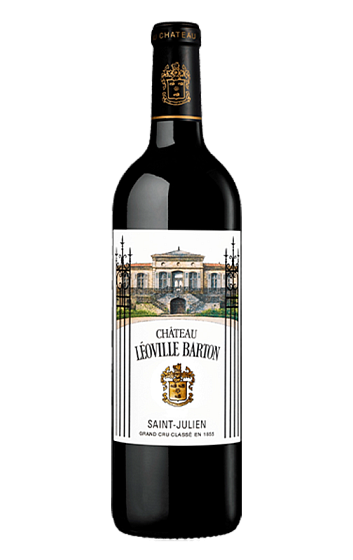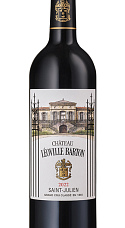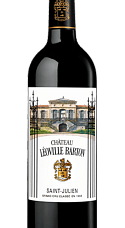Château Léoville Barton 2017
Description
Le Château Léoville Barton 2006, classé deuxième Cru Classé en 1855, est issu de Saint-Julien et offre le meilleur de cette appellation réputée. C'est un Bordeaux classique et puissant, particulièrement adapté à la garde.
Fiche technique
Dégustation
Vignoble et élaboration
et du 22 au 29 septembre (Cabernet).
L'avis des experts
This boldly tannic wine has a firm structure that gives it excellent aging potential. That's because the great blackberry fruits are just as prominent, offering a ripe, juicy character that is already succulent and delicious. Drink this wine from 2024.
Deep garnet-purple colored, the 2017 Léoville Barton charges out of the gate with bold notions of baked plums, crème de cassis and blueberry preserves plus wafts of pencil shavings, fragrant earth and cedar chest. Medium to full-bodied, the palate delivers mouth-coating black fruit preserves with compelling herbal sparks and a firm, grainy texture, finishing long and lively.
The purity of cabernet sauvignon really comes through here with currants, blackberries and stones. Perfumed, too. Medium to full body. Very fine, polished tannins and a fresh, fruity finish. This shows a compact palate with a polished, creamy finish. Much higher percentage of cabernet than is usual. Drink after 2023.
This has a stronger, tighter and more concentrated expression in this vintage than its sister property, although it's not as concentrated as its last few vintages. It's back to a more old school expression for the appellation, suiting the vintage, and it's one of the better-framed wines on display here. Good quality, with ground coffee, dark chocolate and tight cassis notes, all subtly and harmoniously put together.
The deep, inky-colored 2017 Léoville Barton is a classic, powerhouse wine from this estate that’s going to need bottle age. Loads of black and blue fruits, violets, classy oak, and ample minerality all soar from the glass. It’s medium to full-bodied, concentrated, and backward on the palate. With fabulous purity and integrated acidity, forget bottles for 5-6 years and enjoy over the following two decades. The blend in 2017 is 93% Cabernet Sauvignon and 7% Merlot, harvested from the 15th to the 29th of September, and aging in 60% new French oak.








Millésimes: 2024 2023 2022 2017
Nos membres n’ont pas encore laissé de commentaires pour ce millésime. Cliquez sur les millésimes précédents pour accéder aux commentaires.
Nos membres n’ont pas encore laissé de commentaires pour ce millésime. Cliquez sur les millésimes précédents pour accéder aux commentaires.
Nos membres n’ont pas encore laissé de commentaires pour ce millésime. Cliquez sur les millésimes précédents pour accéder aux commentaires.
Nos membres n’ont pas encore laissé de commentaires pour ce millésime. Cliquez sur les millésimes précédents pour accéder aux commentaires.